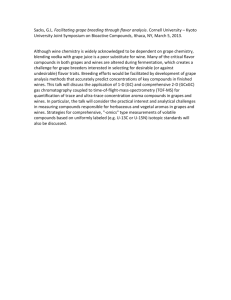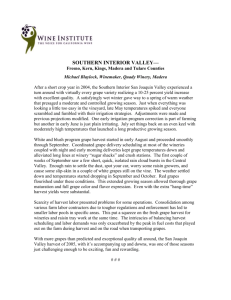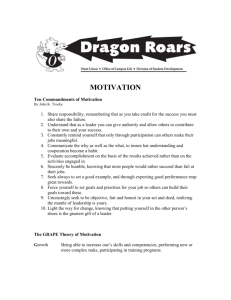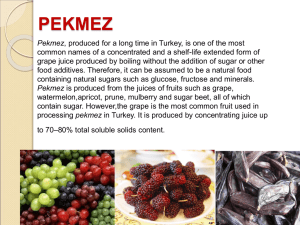Cotton Candy Grape
advertisement
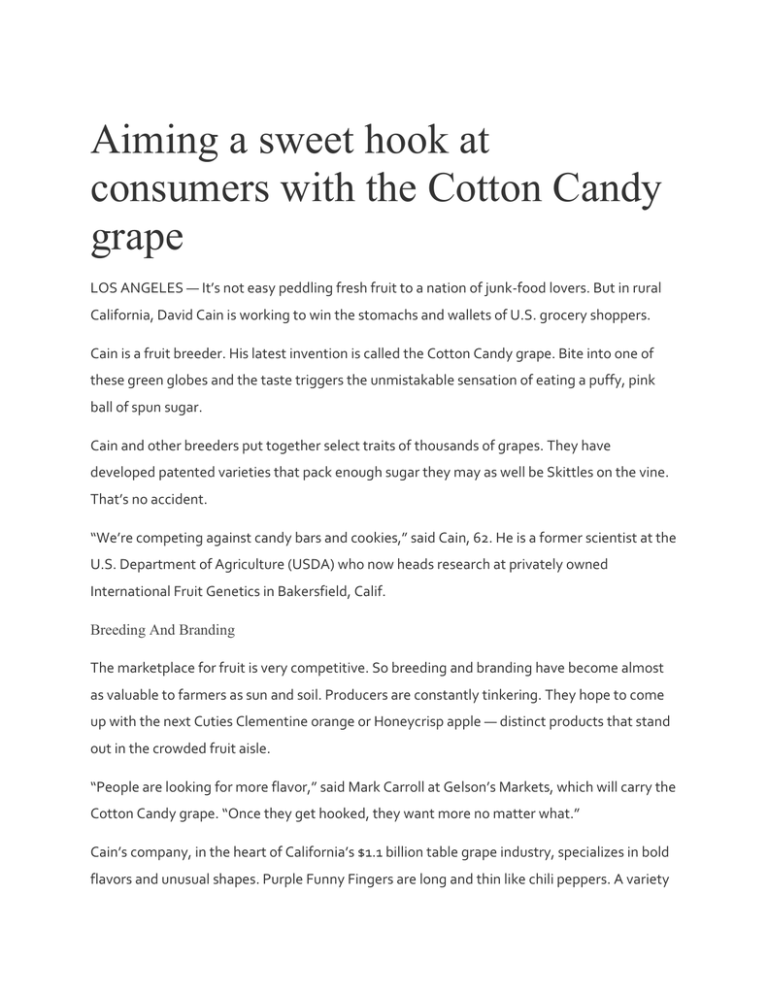
Aiming a sweet hook at consumers with the Cotton Candy grape LOS ANGELES — It’s not easy peddling fresh fruit to a nation of junk-food lovers. But in rural California, David Cain is working to win the stomachs and wallets of U.S. grocery shoppers. Cain is a fruit breeder. His latest invention is called the Cotton Candy grape. Bite into one of these green globes and the taste triggers the unmistakable sensation of eating a puffy, pink ball of spun sugar. Cain and other breeders put together select traits of thousands of grapes. They have developed patented varieties that pack enough sugar they may as well be Skittles on the vine. That’s no accident. “We’re competing against candy bars and cookies,” said Cain, 62. He is a former scientist at the U.S. Department of Agriculture (USDA) who now heads research at privately owned International Fruit Genetics in Bakersfield, Calif. Breeding And Branding The marketplace for fruit is very competitive. So breeding and branding have become almost as valuable to farmers as sun and soil. Producers are constantly tinkering. They hope to come up with the next Cuties Clementine orange or Honeycrisp apple — distinct products that stand out in the crowded fruit aisle. “People are looking for more flavor,” said Mark Carroll at Gelson’s Markets, which will carry the Cotton Candy grape. “Once they get hooked, they want more no matter what.” Cain’s company, in the heart of California’s $1.1 billion table grape industry, specializes in bold flavors and unusual shapes. Purple Funny Fingers are long and thin like chili peppers. A variety named Sweet Sapphire come as round and fat as D batteries. Like the Cotton Candy, the special varieties are patented, then licensed to growers. Ordinary grapes can cost as little as 88 cents per pound. The Cotton Candy could fetch around $6 a pound, though prices would come down if enough farmers grow the grape. The U.S. designer-fruit craze kicked into high gear in the late 1980s. A Californian fruit combining traits of a plum and apricot called the pluot hit the market. The crispy stone fruit took 20 years to develop. It proved such a hit with consumers that it inspired more farmers to put money into breeding programs to boost sales. Pluots To Peacharines California is now putting out other sweet inventions, including apriums (a pluot but with more apricot), peacharines (peach and nectarine) and cherums (cherry and plum). Cross-breeding methods used by fruit breeders are centuries old. In the case of grapes, pollen from male grape flowers is extracted and then carefully brushed onto the female clusters of the target plant. Then comes a lot of waiting. Then replanting. Then repeating the process — for years, even decades. “It’s a bit like fishing. You never know when you’re going to get the big one,” said Cain. He is a soft-spoken man who would look every bit the lab coat-wearing scientist if it weren’t for the soil under his nails. Although some of these grapes have been bred for higher sugar content, nutritionists don’t seem all that bothered. “You would have to eat about 100 grapes to consume the same amount of calories in a candy bar,” said David Heber, director of the UCLA Center for Human Nutrition. Cain got his start in the 1970s as a researcher with the USDA, developing new varieties of table grapes and seedless raisins in Fresno, Calif. Back then, most fruit breeding was done by the government or universities that could afford the time-consuming and expensive work. In 1987 he moved into private business. U.S. grape consumption was exploding at the time, thanks to new seedless varieties developed in California. Obsessed With A Grape Cain helped start International Fruit Genetics in 2001. A few months later, he tasted the grape that has obsessed him ever since. Researchers from the University of Arkansas were showing off a purple Concord grape that didn’t look like much. The flesh was mushy and speckled with tiny seeds. The skin slipped off easily after biting, a no-no in the grape business. But the cotton candy flavor transported Cain to a carnival or county fair. What if he could take the unique flavor of that Eastern U.S. grape and meld it with Californian qualities such as superior crunch, thin skin and generous size? International Fruit Genetics signed a licensing agreement with the University of Arkansas. By 2003, Cain was breeding their grapes with a dozen California varieties on his test field. On a recent weekday, Cain showed why he spends half his time outdoors. Rows and rows of vines needed to be inspected in search of the next big thing. Carrying a tool to measure the sugar content of each grape, Cain methodically tasted his berries. He decides what to keep and what to toss. With 300 kinds of grapes to taste on each row, swallowing the fruit is out of the question. “I’ve learned to do a lot of spitting,” Cain said. Niche Grape Or Revolutionary? It was this same painstaking process that led Cain to find the ideal mate for his spun-sugarflavored Concord, a green beauty called Princess. That variety was developed by the USDA and is known for its crisp feel and juiciness. The Cotton Candy was patented in 2010. A Bakersfield grower is set to harvest the first large crop in August. Cain doesn’t like to fuss over such milestones, but the Cotton Candy has him excited. He thinks its signature flavor has a chance to hook consumers like nothing before. “It’s going to be introduced slowly,” Cain said. “Whether it will be a niche grape or start a revolution is hard to say. What we’re hoping is it will do for grapes what all these new varieties have done for fruit like apples.” 1. In 5 to 8 sentences answer the following question: Would you be more likely to eat a grade that tastes like cotton candy? Why or Why Not? Use evidence from the article to support your option. 2. In 5 to 8 sentences answer the following question: Would you be more likely to eat any of the other fruit creations? Why or Why Not? Use evidence from the article to support your option.
